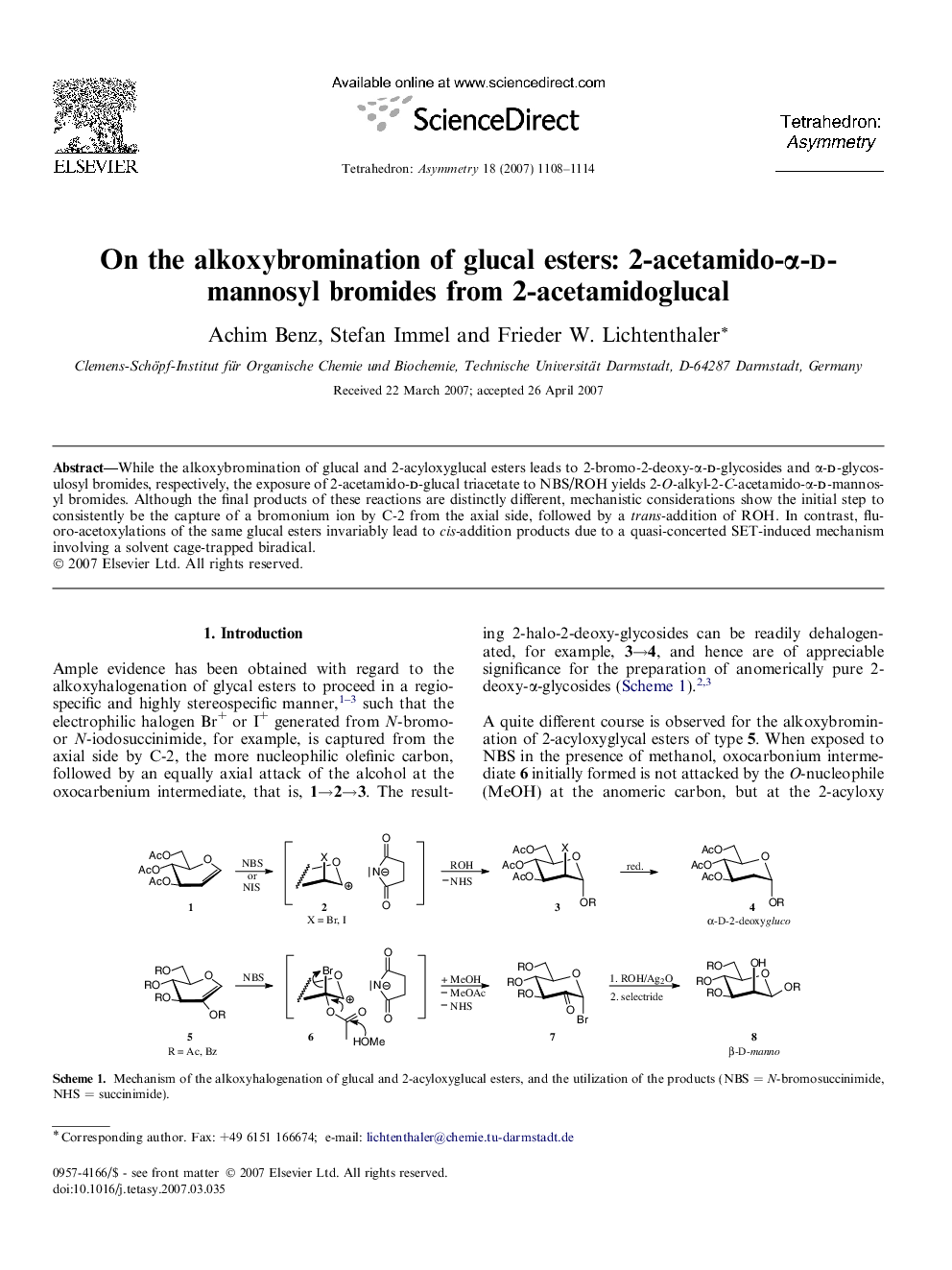| Article ID | Journal | Published Year | Pages | File Type |
|---|---|---|---|---|
| 1348789 | Tetrahedron: Asymmetry | 2007 | 7 Pages |
While the alkoxybromination of glucal and 2-acyloxyglucal esters leads to 2-bromo-2-deoxy-α-d-glycosides and α-d-glycosulosyl bromides, respectively, the exposure of 2-acetamido-d-glucal triacetate to NBS/ROH yields 2-O-alkyl-2-C-acetamido-α-d-mannosyl bromides. Although the final products of these reactions are distinctly different, mechanistic considerations show the initial step to consistently be the capture of a bromonium ion by C-2 from the axial side, followed by a trans-addition of ROH. In contrast, fluoro-acetoxylations of the same glucal esters invariably lead to cis-addition products due to a quasi-concerted SET-induced mechanism involving a solvent cage-trapped biradical.
Graphical abstractFigure optionsDownload full-size imageDownload as PowerPoint slide
2-C-Acetamido-3,4,6-tri-O-acetyl-2-O-methyl-α-d-mannopyranosyl bromideC15H22NO9Br[α]D20=+141 (c 1.8, CHCl3)Source of chirality: d-glucose
2-C-Acetamido-3,4,6-tri-O-acetyl-2-O-ethyl-α-d-mannopyranosyl bromideC16H24NO9Br[α]D20=+127 (c 0.9, CHCl3)Source of chirality: d-glucose
